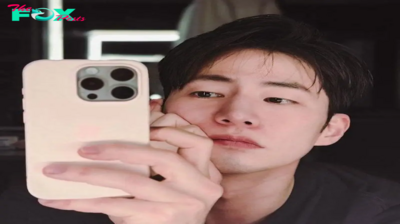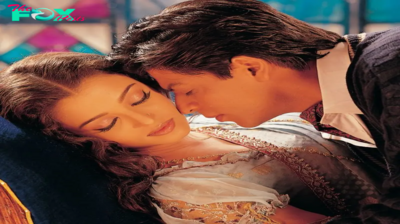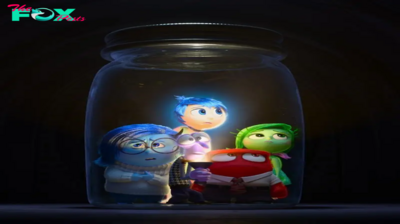Entertainment
The Body Beautified: Curators of The Palace Museum’s New Exhibition on Bringing Historical French Fashion to Hong Kong
From Marie Antoinette to the birth of Luxury, the Hong Kong Palace Museum’s latest exhibition charts the evolution of French fashion and explores its influence today.
“You can expect a lot of ruffles,” says Daisy Wang, beaming, from a meeting room at Hong Kong Palace Museum, where downstairs her team is adding the final touches to the cultural institution’s latest blockbuster exhibition: The Adorned Body: French Fashion and Jewellery 1770–1910 from The Musée des Arts Décoratifs, Paris. And though, bien sûr, it’s thrilling that the museum is set for the full Marie Antoinette treatment as it brings 400 precious items of French costume, jewellery, accessories and larger-than-life wigs within its walls, there’s another reason for Wang’s extra sunny disposition on this particularly drab and wet Tuesday afternoon.
Because the museum has successfully engineered a double coup. Not only has it just broken its own record for organising a show of this magnitude in the shortest time possible – typically taking up to two years to move from idea phase to opening – but in a testament to the well-oiled West Kowloon machine, Wang and her team achieved it in just eight months. They also persuaded the French institution, which owns the world’s most important collections of design and decorative arts, to part with some of its most precious and rare artefacts, loaning them to Hong Kong for the first large-scale exhibition of its collection in Asia. In fact, the show marks the first time many of the items have Travelled to a different venue.
“It’s a really wonderful example of cross-cultural trust and collaboration,” explains Wang, deputy director of curatorial and programming. “They’re not going to do this exhibition with any museum in the world. They have to find a trustworthy partner who can safeguard their work, and we worked hard to convince them we’re the ideal venue.”
Open until mid-October, The Adorned Body is one of four exhibitions being staged by the West Kowloon Cultural District to mark the 60 years of diplomatic relations between France and China. The show charts the evolution of French fashion from the reign of King Louis XVI to La Belle Époque, covering the birth of haute couture and luxury fashion as we know it today, with crinolines, corsets, bustles, broaches and everything in between – and, of course, ruffles a plenty. Moreover, lending her voice as narrator of the trilingual audio guide is the singer and actor Karen Mok, who identifies her own highlights in the exhibition.

Assisted by Dr Ingrid Yeung, associate curator of the HKPM, the exhibition is led by Dr Denis Bruna, head curator of the fashion and textiles department’s pre-1800 collections, and Mathieu Rousset-Perrier, heritage curator of the Middle Ages and Renaissance jewellery collections of the Musée des Arts Décoratif (MAD). The two latter graduates of the prestigious École du Louvre are in town for a month to oversee the installation.
“It’s the first time fashion and jewellery have been presented together on this scale,” says Rousset-Perrier, who previously worked in the heritage department at Boucheron. “And because we have many, many pieces in our collection,” adds Bruna, “the idea was to create a longer story of fashion in relation to jewellery. So, we went through the years to choose items that speak about the most important points in the history of French fashion.”
The exhibition is split into five sections, chronologically arranged to cover the 18th, 19th and early 20th centuries, and shows how the evolution of fashion was iNFLuenced by societal, cultural and economic changes in France. As well as clothing, visitors also get a rare opportunity to see the undergarments people wore during the period, which played a direct role in shaping the era’s silhouettes.

“We didn’t want an exhibition with just beautiful costumes,” explains Bruna. “We wanted to show the construction of appearance and the relationship between the costume and the human body. It’s important for us to also display the different layers of clothes, from the underwear, chemise, corset and Petticoat, to the wigs, jewels and hats, to show what we call the staging of self. That’s why we named the it The Adorned Body.”
“And the relationship to the body was so different in the West compared to the East,” adds Rousset-Perrier. “In Europe, it’s the exact opposite. The body was altered and modified so much, particularly with women. Whereas in Asia, whether it’s male or female, you don’t see the body – they wore these long dresses that had no shape. So that was our starting point to show this relationship to the body, how the body was different and how everything adapted, depending on the undergarments that dictate what the shape of the clothing and the accessories will be.”

Highlights of the exhibition include a 1778 court dress with vast panniers that dates from the reign of Louis XVI. A silk walking dress from 1810–1812, showcasing the era’s popular Empire waistline, demonstrates the evolution towards more streamlined silhouettes under the First Restoration. And a 19th-century diamond skull tie pin, donated by the Rothschild family, highlights how men’s taste in jewellery was once as extravagant as women’s before the formers’ appearance began to become more serious.
In section three, there’s an early example of today’s trend-cycle phenomenon: a dramatic whale-bone hooped crinoline from 1860 during the rule of Napoleon III. “For political reasons, it was important for the new Emperor to create links between himself and the monarchy of the 18th century,” explains Bruna. “And so fashion followed the lead of his wife, Empress Eugénie, who wanted to imitate Marie Antoinette 70 years later and was inspired by the fantasy of the 18th century.”
For fashion lovers, however the exhibition’s pièce de resistance must surely be an 1885 ornate orange silk bustle dress by the famed designer Charles Frederick Worth. “Having in the flesh a piece made by Worth is always such an important thing in any fashion exhibition, explains Bruna. “Not only is he considered the first grand couturier in history, but he also created the birth of the despotism of fashion.”

Worth, who was originally from England, moved to Paris for work as a clothier, later establishing his own Business, the House of Worth. Although he was by no means the first dressmaker in the City of Light, Worth invented a new selling model, creating a catalogue of his designs that clients could order from instead of having garments tailor-made. He also held one of the first examples of a fashion show (though hardly recognisable compared to today’s blockbuster iterations). Beloved for his lavish dresses and credited with popularising the bustle silhouette, Worth soon became the go-to designer for royalty and aristocracy, including the era’s own fashion iNFLuencer, Empress Eugénie.
“From the end of the 19th and the start of the 20th centuries, we see the birth of the luxury world as we know it today; from the birth of haute couture to the birth of all the great French jewellery houses, the way they do business started at this time. It all started then, and it started in Paris,” says Rousset-Perrier.
Given that today the French capital not only hosts up to six fashion weeks a year but is also home to the world’s largest number of ateliers, couturiers and fashion houses, visitors can surely reflect on Worth’s influence on the luxury industry, as well as the historical connections with their own clothes, given that the 18th and 19th centuries are ripe for designer inspiration, as well as fashion’s current obsession with the corset (seen this year alone at Margiela, Mugler, Versace and Dilara Fındıkoğlu). As bustles featured so heavily in Christopher Kane’s autumn ’23 collection, editors declared that the ancient style was back in vogue.

Dispersed throughout the exhibition alongside the garments are film clips that accurately represent clothing of the era and show similar items being worn on screen. The selection includes Emma, The Duchess, the silent short film After the Ball by Georges Méliès and the series Gentleman Jack. “We did a lot of thinking in terms of how we could get Hong Kong or international visitors to connect to old clothing or underwear worn by someone 200 years ago,” explains Wang. “It’s important for us to help people think more about people, because what is culture if you don’t have people?”
It’s this element of human connection that Wang hopes will attract visitors of all ages and backgrounds, just like the Palace Museum’s popular Women in Cartier exhibition. “The Cartier show really opened our eyes to the appetite of people for seeing historical pieces across a wide range of things,” she says. “And now The Adorned Body plays an important component of our overall fashion and textile programme. I like to think of each exhibition like a gemstone in a necklace; I’m more interested in the necklace, so getting the overall exhibition mix right is what’s important to me.”
For more information on tickets and how to visit, please visit the Hong Kong Palace Museum website here.
(Hero Image: Adored body installation view)
-

 Entertainment2h ago
Entertainment2h agoAmerica On CoffeeWe’re simply inviting you to take a timeout into the rhythmic ambiance of our breakfast, brunch and/or espresso alternatives. We’re comfortable everytime you cease by.Shoe Shoe Shine – The Dynamic Superiors
-

 Entertainment3h ago
Entertainment3h agoHow Gladiator II Connects to the Original Gladiator
-

 Entertainment8h ago
Entertainment8h ago3 Completely different Kinds of TV Appearing Roles
-
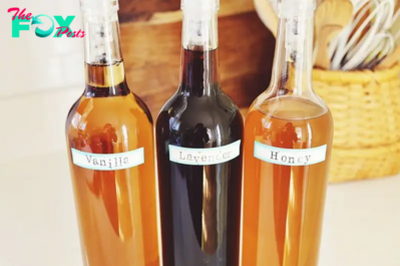
 Entertainment8h ago
Entertainment8h agoAmerica On CoffeeWe’re simply inviting you to take a timeout into the rhythmic ambiance of our breakfast, brunch and/or espresso alternatives. We’re comfortable everytime you cease by.SYRUPING UP YOUR VERY OWN COFFEE FLAVORS
-
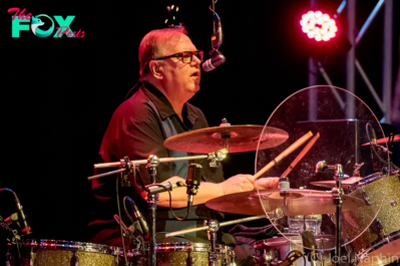
 Entertainment13h ago
Entertainment13h agoThe Smithereens with John Hampson – West Herr Riviera Theatre – North Tonawanda, NY – November 20, 2024
-

 Entertainment18h ago
Entertainment18h agoAmerica On CoffeeWe’re simply inviting you to take a timeout into the rhythmic ambiance of our breakfast, brunch and/or espresso alternatives. We’re comfortable everytime you cease by.Vacation Espresso Cocktail
-

 Entertainment18h ago
Entertainment18h ago12 Methods to Command a Stage
-

 Entertainment20h ago
Entertainment20h agoDid You Correctly Answer This Poughkeepsie Related Jeopardy Question?






